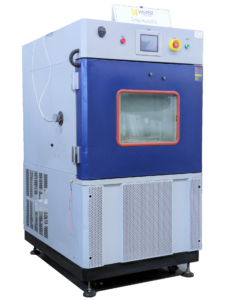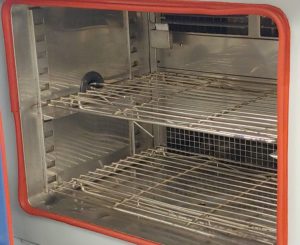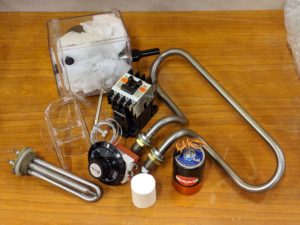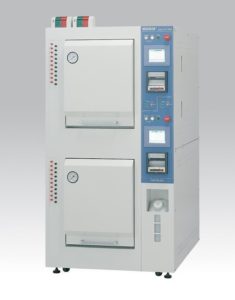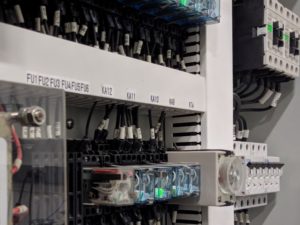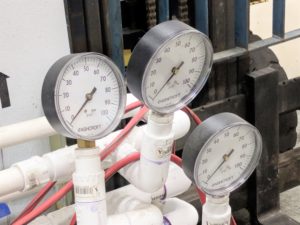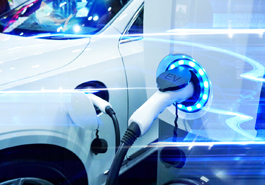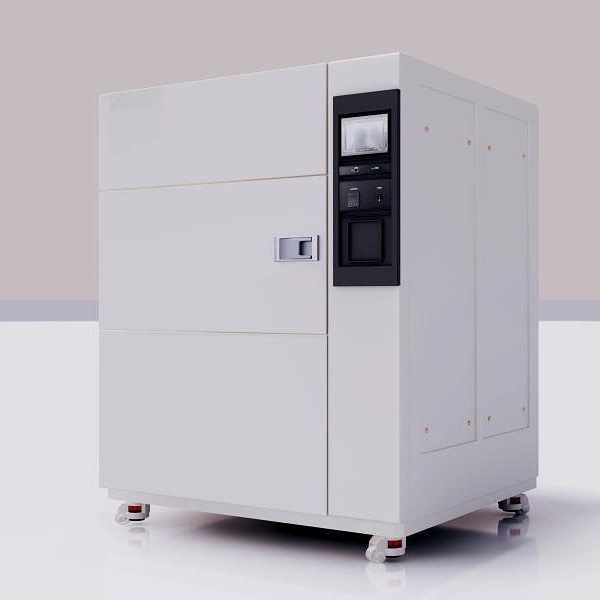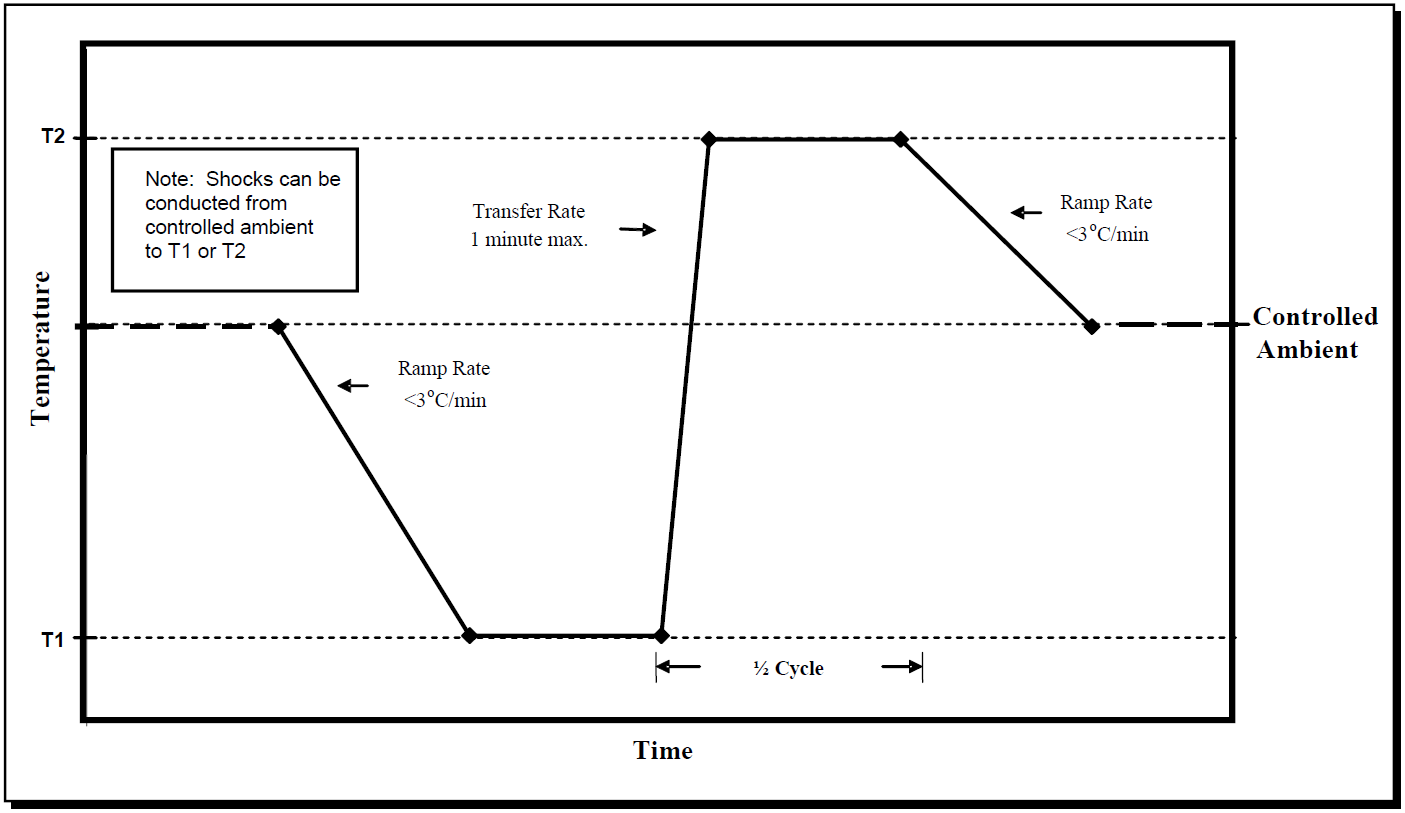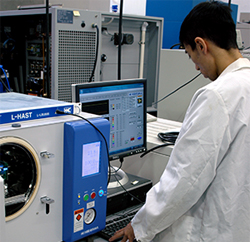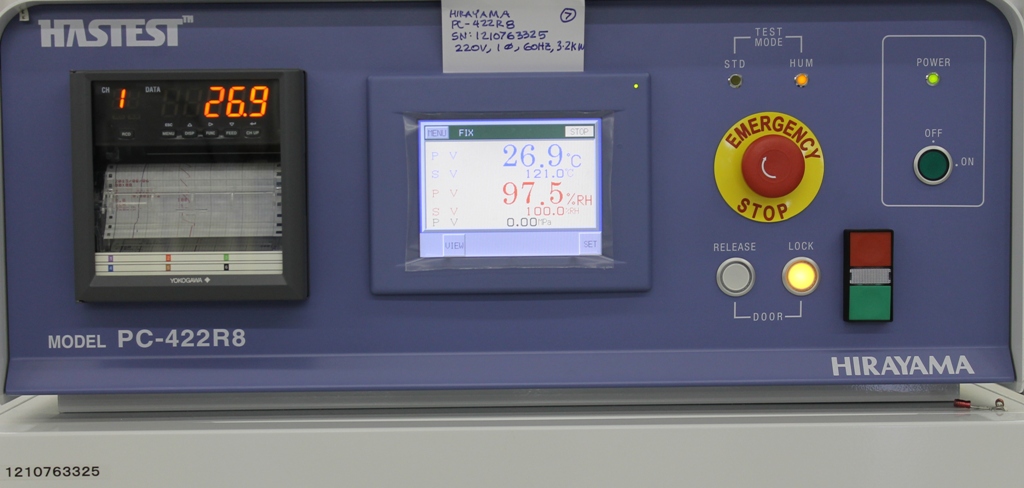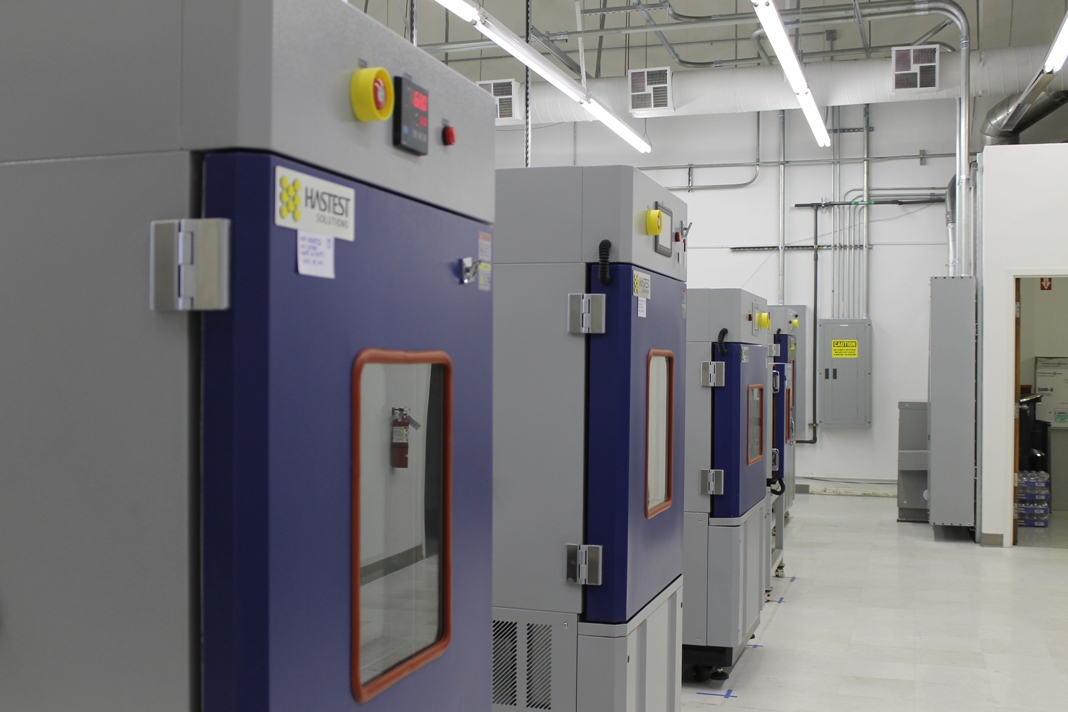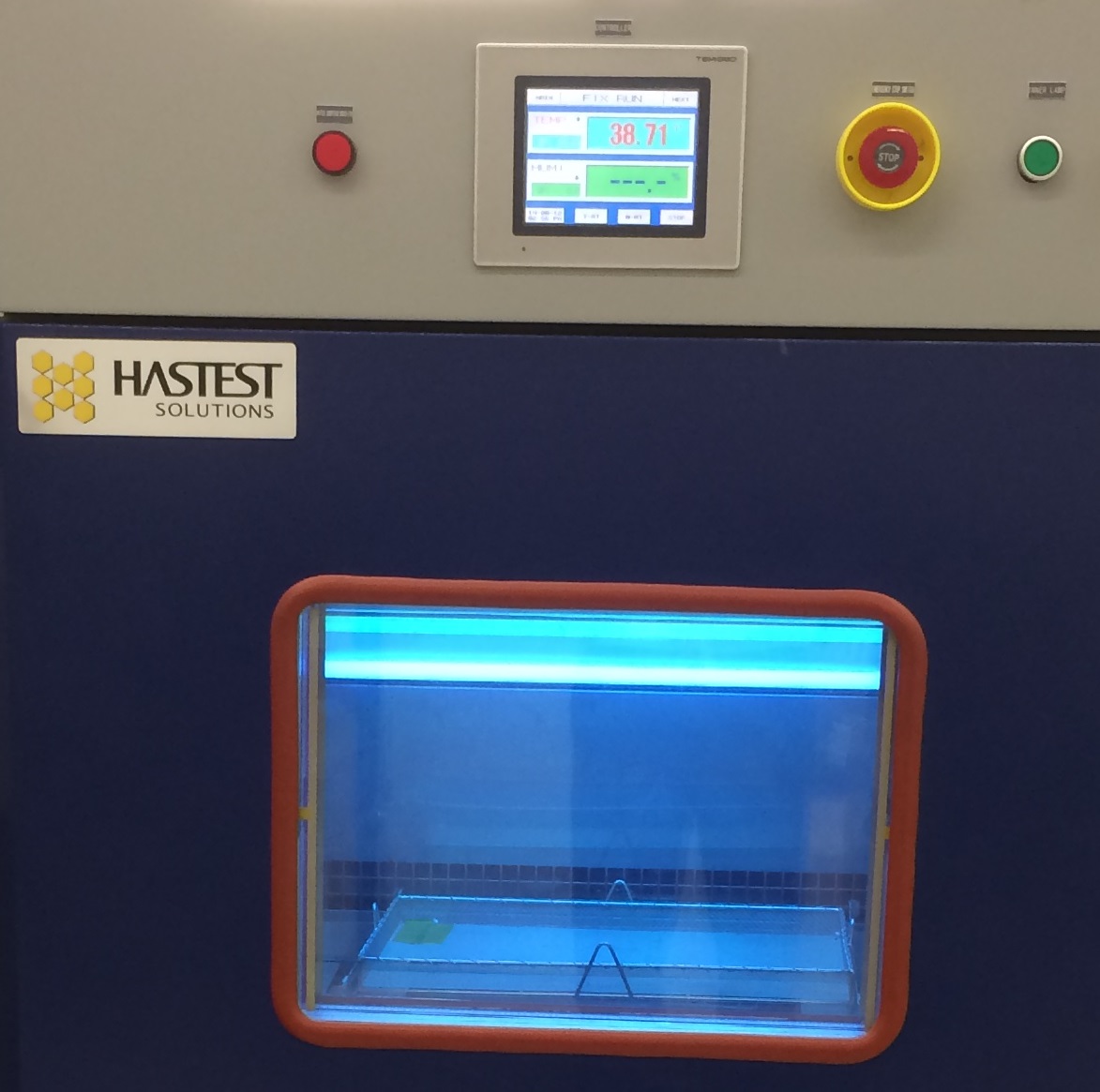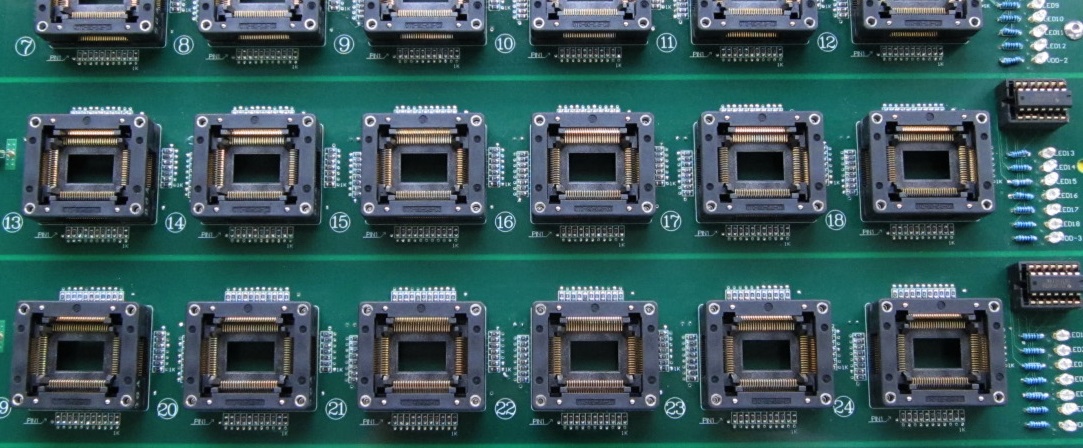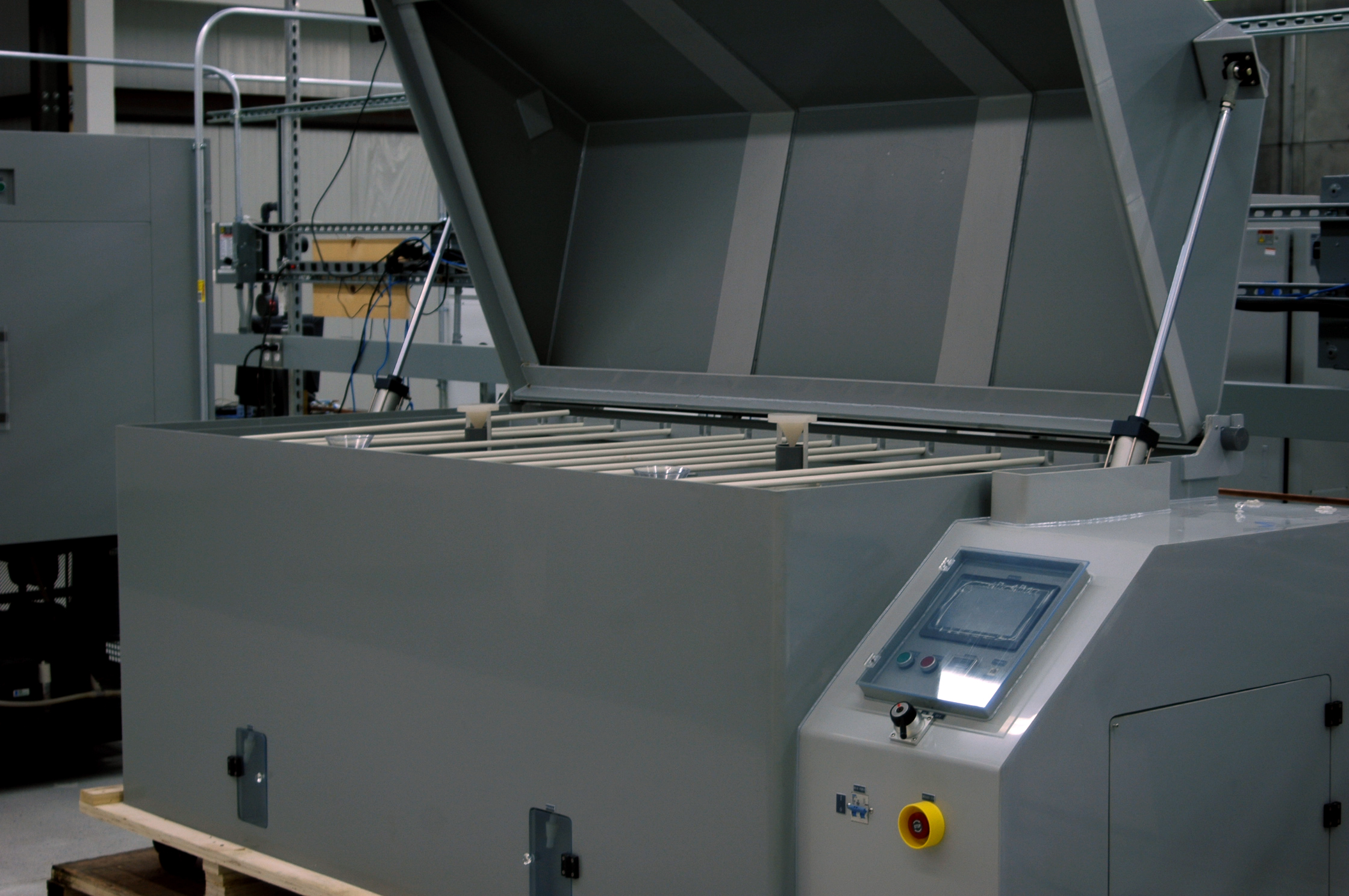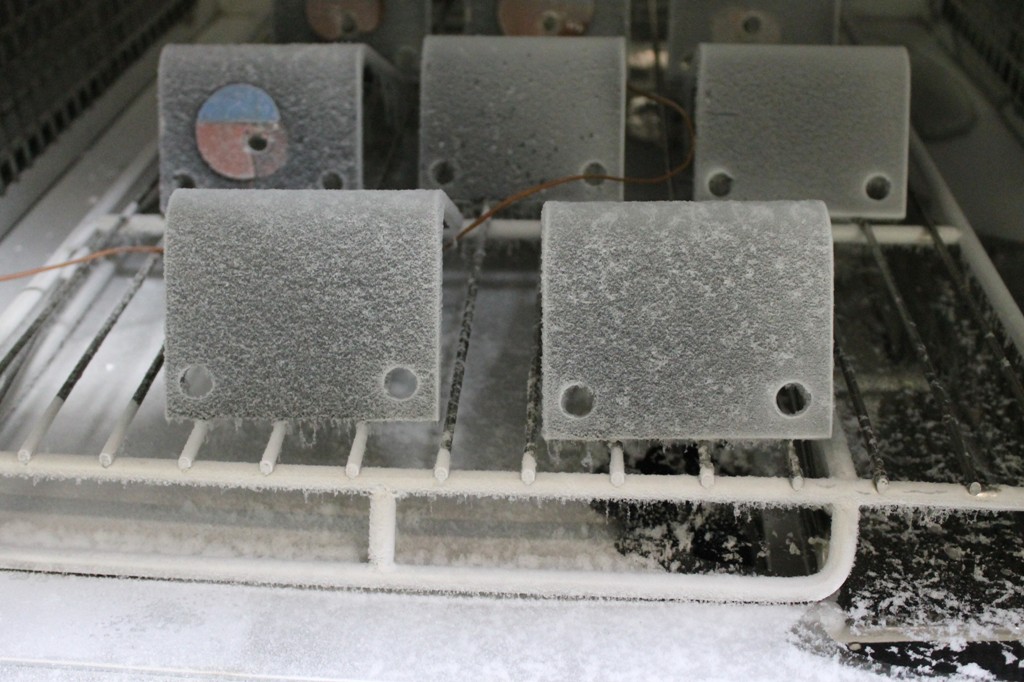Temperature and humidity are the main parameters used to simulate the natural environment that causes static products to fail from stress. This makes temperature and humidity chambers useful for practically every industry use case; notable products in the electronics field that undergo testing are CPUs and memory DIMMs, resistors and capacitors, mobile SoCs, batteries, and photovoltaic cells. Components in the automotive and aerospace fields also get temperature and humidity tested, such as body panels, gaskets, bearings, and lighting fixtures.
Temperature and humidity chambers generally use three core components for their functionality: a heater, a refrigeration system, and a humidifier. These components are typically managed by a programmable controller. Test chambers will also feature adequate safety systems to protect operators. The ambient temperature in this type of chamber is raised with an electric heater, and lowered with the refrigeration system.
Temperature and humidity testing is an important step in validating products for ensuring their durability by evaluating their service-life in extreme conditions. Performing adequate testing on prototypes can help you save money by building a robust product in the first place, rather than spending resources replacing defective products post-release.
Mil-Std 810G is one of many standards that specify parameters for temperature and humidity testing. JESD22-A101 is a test standard that uses the 85/85 test, which puts specimen through 85°C and 85% RH for a set duration. SAE J1455 hosts a series of tests for vehicles that include temperature and humidity cycling.



